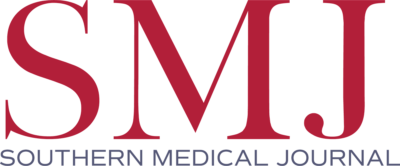The Southern Medical Journal (SMJ) is the official, peer-reviewed journal of the Southern Medical Association. It has a multidisciplinary and inter-professional focus that covers a broad range of topics relevant to physicians and other healthcare specialists.
SMJ // Article
Original Article
Is Early Reperfusion a Good Thing? Optimal Timing of CABG Surgery Postacute Myocardial Infarction
Abstract
Objectives: The optimal timing of coronary artery bypass grafting (CABG) following an acute myocardial infarction (AMI) is a topic of debate. The present study was designed to evaluate patients undergoing CABG both early (<5 days) and late (>5 days) after AMI in the era of percutaneous coronary intervention.Methods: The medical records at our institution from 2008 through 2012 were reviewed. A total of 128 patients underwent CABG after AMI during this time period and fulfilled criteria for the study. Death, stroke, renal failure, need for intraaortic balloon pump, postoperative ventilator days, and length of stay were examined.
Results: Patients undergoing early CABG had an increased need for an intraaortic balloon pump. There were no other correlations that we could discern between early and late CABG.
Conclusions: Our data demonstrate no statistical difference in mortality or in the factors of morbidity studied between either early or late CABG after AMI.
This content is limited to qualifying members.
Existing members, please login first
If you have an existing account please login now to access this article or view purchase options.
Purchase only this article ($25)
Create a free account, then purchase this article to download or access it online for 24 hours.
Purchase an SMJ online subscription ($75)
Create a free account, then purchase a subscription to get complete access to all articles for a full year.
Purchase a membership plan (fees vary)
Premium members can access all articles plus recieve many more benefits. View all membership plans and benefit packages.

